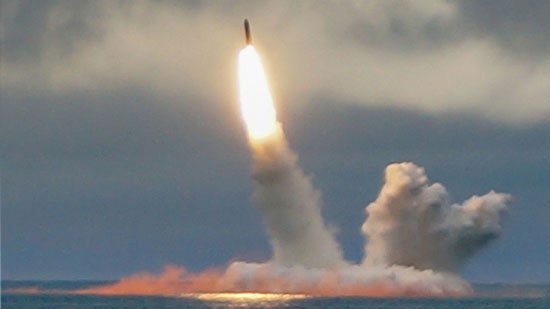Moscow
Russia’s newest nuclear-powered submarine has for the first time test-fired an intercontinental ballistic missile ahead of the vessel’s delivery into service this year, the Defense Ministry announced Wednesday.
The Knyaz Vladimir, which is expected to join the Russian Navy’s Northern Fleet in December 2019, was floated out in 2017 and embarked on its first sea trials a year later. Nighttime footage published by the Russian Defense Ministry showed the Knyaz Vladimir launching the Bulava, Russia’s newest solid-fueled ballistic missile, from an underwater position.
“For the first time, the… strategic submarine Knyaz Vladimir test-launched the sea-based Bulava ballistic missile,” the state-run TASS news agency quoted the Defense Ministry as saying.
The Bulava flew thousands of kilometers from the waters of the White Sea in the northern Arkhangelsk region to the Kamchatka peninsula in Russia’s Far East.
The military said the missile flight had been successful and that it arrived at the test range on time. Knyaz Vladimir will carry up to 16 intercontinental missiles of the RSM-56 Bulava type with each missile expected to carry four to six nuclear warheads.
In all, Russia is scheduled to build and commission 10 new Borei-class submarines by 2027, with five expected to serve in the Pacific Fleet and five in the Northern Fleet.—Tass










